– By #Pioneer Auto Show
Kids and adults alike are mesmerized when a fire truck speeds past them, hauling massive equipment and brave firefighters on their way to battle a fire. While they certainly catch our attention while they’re in action, many may not know much about the interesting transformation fire trucks have undergone over the years in order to make them the life-saving vehicles we know and love today. Take a moment to learn more about the history of fire trucks, and you just may gain an even greater appreciation for all of the amazing feats they accomplish.
Long before the familiar red fire trucks we know today zoomed to the rescue, “bucket brigades” were the common method used to put out fires. Citizens were required to leave buckets of water by their doorsteps for use by firefighters in an emergency. The firefighters would form a chain, where the containers would be passed hand to hand from a well until it reached the location of the fire. It was a long, exhausting process, required a lot of manpower and, unsurprisingly, wasn’t very successful at actually putting fires out. In order to better save lives and homes, the process needed to be streamlined.
Much of the technology that we still use on fire trucks today was developed hundreds of years ago, and improved upon over the years. Richard Newsham revolutionized firefighting in 1721 when he filed a patent for the first ever fire engine pump, which could hold 170 gallons of water and allowed the bucket brigade to get rid of their puny pails for transporting water. The pump, which was manually operated by people standing on opposite sides of the device, was widely used throughout Europe before it made its debut in the United States in 1731, where it remained a critical piece of firefighting equipment for close to 100 years.
In 1822, another invention was introduced that would bring us another step closer to modern fire trucks: a suction engine that allowed firefighters to draw water from a concentrated source. These engines were initially carried by people, but as the engines continued to get larger, they had to eventually be transported by a team of horses. After adding horses, response times to fires improved drastically, and the latest technology was continually being sought out to further better the timing in which fire trucks arrived at the scene of an emergency.
Finally, at the turn of the 20th century, and with the invention of the automobile, the solution to efficiently carrying bulky equipment, water, and firefighters to the scene of a fire was solved. Starting in 1911, Mack Trucks became a leading manufacturer of fire trucks, a title they hold to this day. In the 1930’s, the ladders that were put on the trucks received an upgrade, and the new turntable ladders that were installed directly onto the trucks allowed firefighters to reach heights of up to 150 feet. Other features were also added to the trucks, including modern water pumps and “cherry pickers”, which hoist firefighters to heights that were once impossible. All of these advances in fire truck technology have caused fire-related deaths to continue to steadily decline over the years.
Now that you know more about the hard work and ingenuity that went behind creating these crucial vehicles, make sure to check out the antique model fire trucks at Pioneer Auto Show! Just like the life-size versions, they are sure to strike awe in those young and old.
Last Modified:




